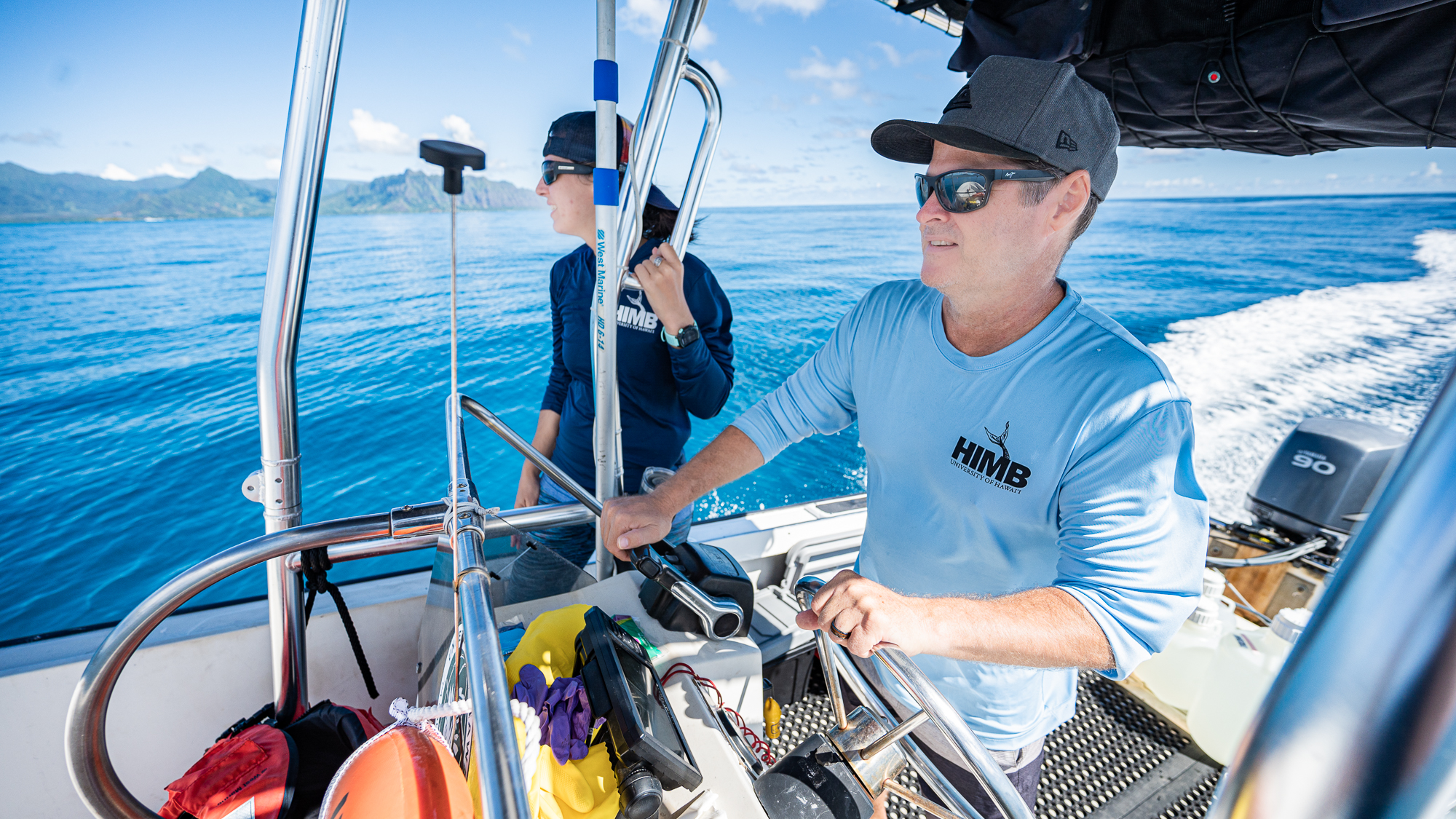Ocean’s smallest predators focus of new $2M project
 HIMB postdoc Kelle Freel and HIMB researcher Mike Rappé sampling seawater in Kaneohe Bay in order to make growth media and isolate marine bacteria. Credit: A. Murat Eren.
HIMB postdoc Kelle Freel and HIMB researcher Mike Rappé sampling seawater in Kaneohe Bay in order to make growth media and isolate marine bacteria. Credit: A. Murat Eren.Within the community of microscopic plankton are the ocean’s smallest predators; small but significant in the critical ecosystem. The diversity and ecosystem function of those predators are the focus of a new project led by researchers at the University of Hawai’i Mānoa. Kyle Edwards and Grieg Steward of the Department of Oceanography and Mike Rappé of the Hawai’i Institute of Marine Biology were awarded $2 million from the National Science Foundation program “Biodiversity on a Changing Planet.” The program funds research on grand challenges in biodiversity science within the context of environmental change.
“Here in Hawai’i we are surrounded by ocean waters that are beautifully clear and blue because the nutrients that support photosynthesis are scarce,” said Steward. “And we expect more of the ocean to look like this in the future. By studying these predator-prey interactions in detail, we aim to predict how the composition of the complex plankton communities will respond to changing ocean conditions.”
The five-year project will focus on microbial food webs that are the foundation of open ocean ecosystems. The most abundant prey in the ocean are minute bacteria, and their primary predators are tiny, single-celled flagellates. The researchers will study which predator species eat which prey species, and how efficiently energy and nutrients are transferred up the food chain.
“A fascinating feature of the open ocean food web is that so many of the primary producers are also prolific predators,” noted Edwards. “These hybrid plankton—called mixotrophs because they mix two modes of nutrition— gain energy from sunlight like a plant, even as they consume prey like an animal. Models suggest that mixotrophs help sustain higher ocean productivity and that their importance may increase in a warmer future ocean, but we really need a better foundation of data from lab and field experiments to make more confident, detailed projections.”
Studying open ocean plankton in the lab can be daunting, but the researchers will capitalize on their decade of prior effort to coax many new species of predator and prey to grow under controlled conditions.
“This research is possible because of two unique culture collections created by the Steward and Rappé labs,” said Edwards. “These collections allow us to do lab experiments with globally important microorganisms that are far away from most oceanographic institutions, but relatively accessible to us, here in the center of the Pacific.”
“We rely on the productivity of open ocean ecosystems to keep our planet habitable, so we really want to improve our understanding of how these low-nutrient ecosystems function—now and especially as our climate changes,” said Steward.



